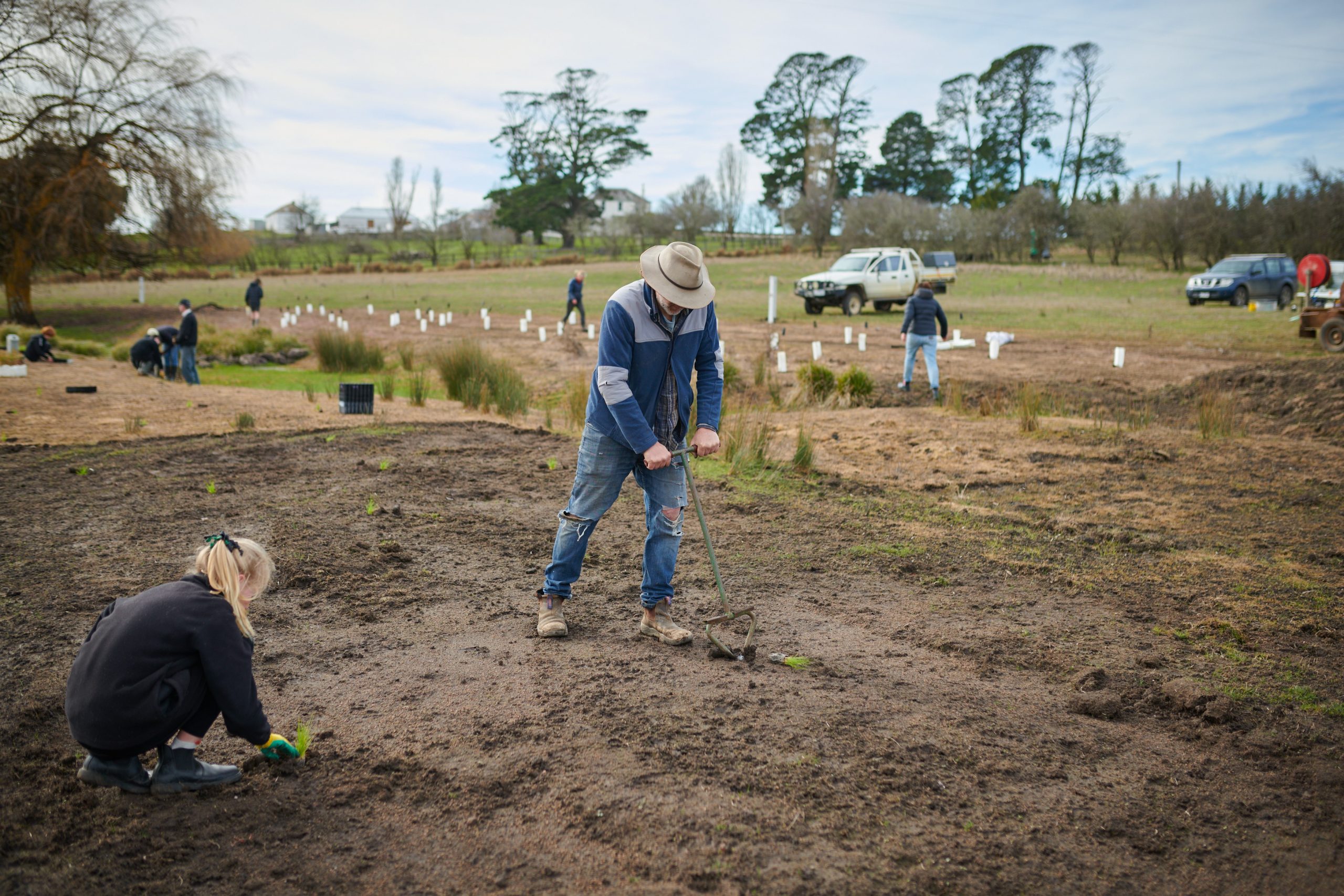Recent community planting days were a major milestone in locals’ plans to restore Snipes Creek at Greenhill so it once again sends clean water into the Campaspe River, into which it flows, and supports thriving natural ecosystems.
Students, teachers and parents from Kyneton Primary School’s Sustainability Group kicked off two days of planting the floodplain and river banks of the creek with more than 5000 native grasses and sedges.
On the following day, more than 20 volunteers from the town came out to help the efforts.
Warming up around a bonfire, eating burgers cooked on the coals, they learned from Kim Strawhorn – on whose property the restoration project is occurring – about the creek’s history and why he is determined to repair past damage.
“Coliban Water, who were recently convicted in the criminal courts for polluting the Campaspe River, used Snipes Creek as a dumping ground for years, right up to 2016 regardless of the EPA withdrawing their licence in 2007,” Kim said.
“With the help of Biolinks Alliance we have installed leaky weirs to slow down the flow of water and create pools, we have fenced the creek off from livestock and have started to re-establish the aquatic and creek line vegetation, which is all designed to filter and clean the water before it reaches the Campaspe River.”
Kim hopes the project can demonstrate a way to repair the whole creek but he stresses that it will need to be in conjunction with ensuring no more wastewater is released into it.
He says it is unfortunate that Coliban Water is currently seeking amendments to its licence for the Kyneton Water Reclamation Plant, which include a consideration to once again use Snipes Creek to dispose of wastewater.
The Snipes Creek restoration project is part of a large-scale conservation project between Greenhill and Black Hill.
Biolinks Alliance is working with multiple landholders on this project, which aims to restore the ecological health of the region so that it again supports once-abundant species like the koala, platypus and the brush-tailed phascogale.
The creek is named after a migratory bird from Japan, latham’s snipe. The snipe is a wading bird that uses its long bill to push into mud to find feed, it requires good native cover such as cumbungi and sedges. The bird was common until after the war and is occasionally seen on the river today.







